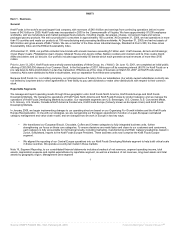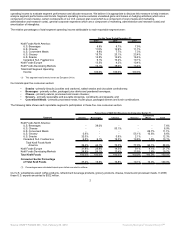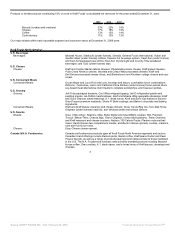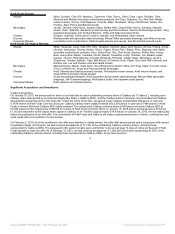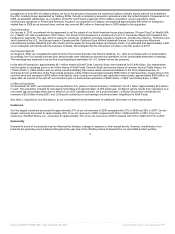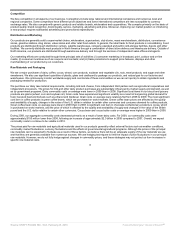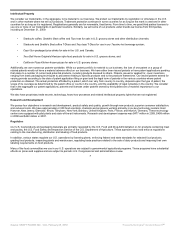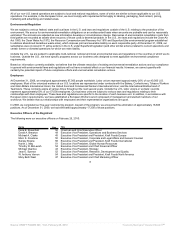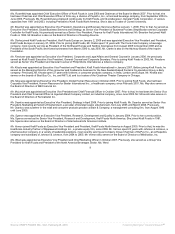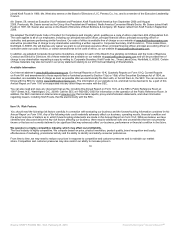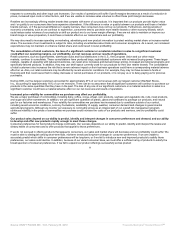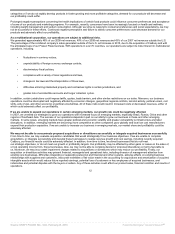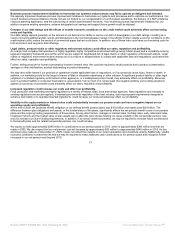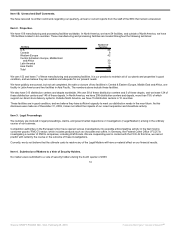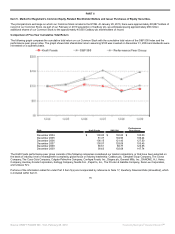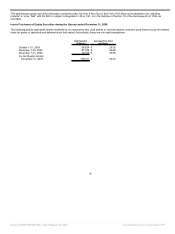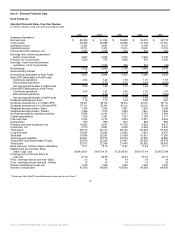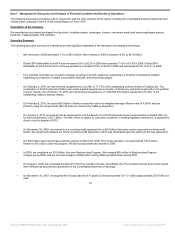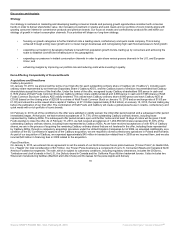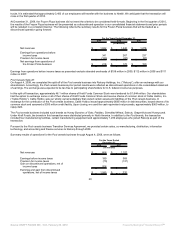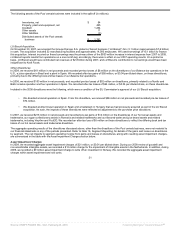Kraft 2009 Annual Report Download - page 14
Download and view the complete annual report
Please find page 14 of the 2009 Kraft annual report below. You can navigate through the pages in the report by either clicking on the pages listed below, or by using the keyword search tool below to find specific information within the annual report.
response to commodity and other input cost increases. Our results of operations will suffer if profit margins decrease as a result of a reduction in
prices, increased input costs or other factors, and if we are unable to increase sales volumes to offset those profit margin decreases.
Retailers are increasingly offering retailer brands that compete with some of our products. It is important that our products provide higher value
and / or quality to our consumers than less expensive alternatives. If the difference in value or quality between our products and those of retailer
brands narrows, or if the perceived difference in quality narrows, then consumers may not buy our products. Furthermore, during periods of
economic uncertainty, such as we continue to experience, consumers tend to purchase more retailer brands or other economy brands, which
could reduce sales volumes of our products or shift our product mix to our lower margin offerings. If we are not able to maintain or improve our
brand image or value proposition, it could have a material effect on our market share and our profitability.
We may also need to increase spending on marketing, advertising and new product innovation to protect existing market share or increase market
share. The success of our investments is subject to risks, including uncertainties about trade and consumer acceptance. As a result, our increased
expenditures may not maintain or enhance market share and could result in lower profitability.
The consolidation of retail customers, the loss of a significant customer or a material reduction in sales to a significant customer
could affect our operating margins, our profitability, our net revenues and our results of operations.
Retail customers, such as supermarkets, warehouse clubs and food distributors in the U.S., the European Union and our other major
markets, continue to consolidate. These consolidations have produced large, sophisticated customers with increased buying power. These larger
retailers, capable of operating with reduced inventories, can resist price increases and demand lower pricing, increased promotional programs and
specifically tailored products. In addition, they may use shelf space currently used for our products for their own retailer brands. The consolidation
of retail customers also increases the risk that a severe adverse impact on their business operations could have a corresponding material adverse
effect on us. Also, our retail customers may be affected by recent economic conditions. For example, they may not have access to funds or
financing and that could cause them to delay, decrease or cancel purchases of our products, or to not pay us or to delay paying us for previous
purchases.
During 2009, our five largest customers accounted for approximately 27% of our net revenues with our largest customer Wal-Mart Stores,
Inc., accounting for approximately 16% of our net revenues. There can be no assurance that all significant customers will continue to purchase our
products in the same quantities that they have in the past. The loss of any one of our significant customers or a material reduction in sales to a
significant customer could have a material adverse effect on our net revenues and results of operations.
Increased price volatility for commodities we purchase may affect our profitability.
We are a major purchaser of commodities, including dairy, coffee, cocoa, wheat, corn products, soybean and vegetable oils, nuts, meat products,
and sugar and other sweeteners. In addition, we use significant quantities of plastic, glass and cardboard to package our products, and natural
gas for our factories and warehouses. Price volatility for commodities we purchase has increased due to conditions outside of our control,
including recent economic conditions, currency fluctuations, availability of supply, weather, consumer demand and changes in governmental
agricultural programs. Although we monitor our exposure to commodity prices as an integral part of our overall risk management program,
continued volatility in the prices of commodities we purchase could increase the costs of our products and services, and our profitability could
suffer.
Our product sales depend on our ability to predict, identify and interpret changes in consumer preferences and demand, and our ability
to develop and offer new products rapidly enough to meet those changes.
Consumer preferences for food products change continually. Our success depends on our ability to predict, identify and interpret the tastes and
dietary habits of consumers and to offer products that appeal to those preferences.
If we do not succeed in offering products that appeal to consumers, our sales and market share will decrease and our profitability could suffer. We
must be able to distinguish among short-term fads, mid-term trends and long-term changes in consumer preferences. If we are unable to
accurately predict which shifts in consumer preferences will be long-term, or if we fail to introduce new and improved products to satisfy those
preferences, our sales could decline. In addition, because of our varied consumer base, we must offer a sufficient array of products to satisfy the
broad spectrum of consumer preferences. If we fail to expand our product offerings successfully across product
11
Source: KRAFT FOODS INC, 10-K, February 25, 2010 Powered by Morningstar® Document Research℠


